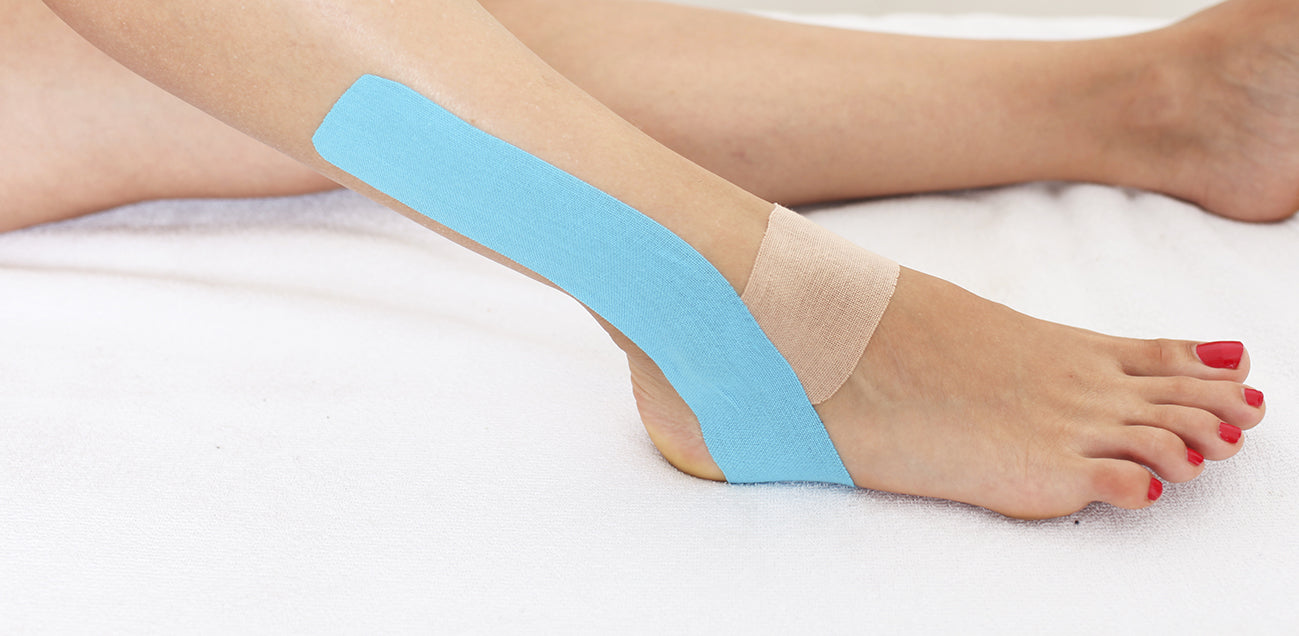
Perhaps the most critical aspects of training are rest and recovery. These two instrumental facets of a training regime will ensure any sports enthusiast will go far. An essential part of recovery is avoiding injury. At the same time, it goes without saying depending on the state of the injury; it could result in a sports enthusiast being laid up and forced to rest for months. For professionals, these times of recovery can be very stressful.
Fortunately, sports medicine has come a long way; long gone are the times slight injuries would see people laid up in beds with their limbs elevated. Several advancements in both technology and medicine have cut down recovery time significantly, and there are now methods to use tools to avoid injury.
One of the most forward-thinking fields in injury prevention is using athletic or kinesiology tape to avoid injuries while practicing sports. These strips of tape are placed along muscles or wrapped around articulation to bring protection to the body helping support the various muscle groups used during the activity.
An excellent example is boxers using wraps to protect their hands from injury during sparring or boxing matches. This article intends to explain how to best use self-adhesive bandage wraps to avoid injury. I will primarily focus on the Kinesiology tape and its history since its inception in Japan by Dr. Kenzo Kase during the 1970s.
History of Kinesiology Tape
Kinesiology tape, commonly known as K-tape, is a therapeutic tape used to treat and prevent injuries. K-tape is made of elastic cotton strips with an adhesive backing that can stretch up to 140% of its original length. It is designed to emulate the natural movement of the skin and muscles, providing support and stability while allowing for a full range of motion. The history of K-tape dates back to the 1970s when it was first developed by a Japanese chiropractor named Dr. Kenzo Kase.
Dr. Kase developed K-tape as a solution to the limitations of traditional athletic tape. Dr. Kase noticed that the rigid and non-elastic nature of medical tape restricted movement and caused discomfort to his patients. Dr. Kase desired to create a tape to provide support and stability without limiting motion, so he began experimenting with different materials and adhesive formulas.
After several years of research and development, Dr. Kase created the first version of K-tape in 1979. It was made of a thin, lightweight cotton material with a heat-activated adhesive that allowed it to stick to the skin without irritating. Dr. Kase called his creation Kinesio Tape and successfully began using it on his patients. The tape provided support while being flexible enough to allow a full range of motion.
Word of the benefits of Kinesio Tape soon spread among the athletic community, and it became a popular treatment option among athletes and physical therapists. However, it wasn't until the 2008 Summer Olympics in Beijing that Kinesio Tape gained widespread recognition. Many athletes, including US volleyball player Kerri Walsh, were seen wearing the distinctive strips of brightly colored tape on their arms, legs, and shoulders. High-endurance athletes would swear by the tape's protective features and how they allowed maximum performance even when injured.
The London Olympics exposure helped catapult Kinesio Tape into the mainstream. Soon, physical therapists and sports medicine practitioners worldwide used K-tape to treat various injuries, from sprains and strains to tendonitis and arthritis. The product also improved athletic performance by enhancing muscle function and reducing fatigue.
Why Use Athletic Tape
Today, K-tape is widely used in the sports and fitness industries and is available in various colors and patterns. The tape is also used in medical settings to treat various conditions, from lymphedema to chronic pain. K-tape is considered safe for most people and is non-invasive, making it an attractive alternative to more invasive treatments like surgery or medication.
K-tape, or kinesiology sports tape, is a therapeutic tape that can treat and prevent various injuries. The tape is applied on the skin in specific patterns. The strips of tape work together, anchoring against the skin to pull against the skin allowing blood flow to reach injured areas to speed up the healing process by fighting off swelling.
While primarily focused on injury prevention, this article explores the several reasons sports practitioners might want to use K-Tape.
Here are some reasons why you may need a K-tape:
- Reduce pain: K-tape can help to reduce pain and discomfort caused by a wide range of injuries, including sprains, strains, and tendonitis. The tape provides support and stability to the affected area, which can help relieve pressure and reduce pain.
- Improve range of motion: K-tape is designed to mimic the natural movement of the skin and muscles, allowing for a full range of motion. By providing support without limiting motion, K-tape helps to improve mobility and flexibility. It makes performing daily activities and participating in sports and other physical activities more accessible.
- Prevent injuries: K-tape can also be used as a preventative measure to help reduce the chance for injury. By providing support and stability to vulnerable areas, such as the knees or ankles, K-tape can help to reduce the risk of strains, sprains, and other injuries.
- Enhance athletic performance: K-tape can also enhance athletic performance by improving muscle function and reducing fatigue. By supporting and improving circulation, k-tape can help athletes perform at their best and recover more quickly from intense training sessions or competitions.
How to Apply the Tape
Self-adhesive bandage wraps, also known as cohesive bandages or self-stick wraps, are commonly used to treat and prevent injuries in various body parts. These bandages are elastic, flexible, and self-adhered, making them ideal for supporting, comping, and protecting injured areas. However, applying a self-adhesive bandage wrap correctly ensures maximum effectiveness and avoids further injury.
K-tape, known as Kinesiology tape, is a thin, stretchy, and flexible adhesive tape widely used for injury prevention, pain relief, and muscle support. K-tape is commonly used by athletes and physical therapists to prevent injuries and improve performance. Applying K-tape for injury prevention involves several steps that must be followed carefully to ensure effectiveness.
K-tape is a versatile tool for injury prevention that can be applied to various body parts, including the knees, shoulders, ankles, and back. Here are a few tips to keep in mind when using kinesiology tape to prevent injury.
Tip 1: Apply the tape before physical activity
To prevent injuries during physical activity, apply the K-tape before the activity. This will support the muscles and joints and prevent them from getting strained or injured.
Tip 2: Use the proper technique
Follow the steps above to apply the K-tape properly. The proper technique will ensure its effectiveness and prevent skin irritation or damage.
Tip 3: Avoid overstretching the tape
Avoid overstretching the tape as it may cause discomfort and reduce blood flow to the area. Extend the tape slightly as you apply it to ensure it adheres to the skin properly.
Tip 4: Remove the tape gently
To prevent skin irritation or damage, remove the tape gently in the direction opposite to its application. Do not rip off the tape forcefully.
Below are the steps for applying K-tape for injury prevention:
Step 1: Clean and dry the skin
Before applying K-tape, it is essential to ensure the skin is clean and dry. Any oils, lotions, or sweat on the skin can prevent the tape from sticking correctly, reducing its effectiveness. Use soap and water to clean the skin, then dry it with a towel or cloth. Shave the area and remove any excess. Just a warning if you neglect to do this the glue will pull the hair out when removed.
Step 2: Measure and cut the tape
Measure the length of the tape needed for the specific area you are targeting. Cut the tape to the appropriate length using scissors. It is essential to round the corners of the tape to prevent it from peeling off easily.
Step 3: Apply the tape
Apply the K-tape to the targeted area. Extend the tape slightly as you apply it to ensure it adheres to the skin properly. Do not stretch the tape too much, as it may cause discomfort and reduce blood flow to the area. Be sure to apply the tape in the direction of the muscle fibers.
Step 4: Rub the tape to activate the glue
After applying the tape, rub it gently with your fingers to activate the adhesive. This will help the tape stick better to the skin and enhance its effectiveness.
Step 5: Check for any discomfort
Check for any discomfort or irritation caused by the tape. Remove the tape immediately if you feel discomfort or irritation, and consult a healthcare professional.
Step 6: Remove the tape
To remove the tape, gently peel it off the skin in the direction opposite to its application. Do not rip off the tape forcefully, as it may cause skin irritation or damage.



